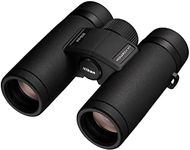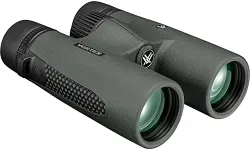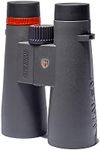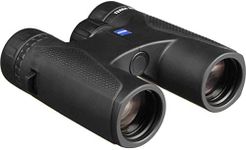We Use CookiesWe use cookies to enhance the security, performance,
functionality and for analytical and promotional activities. By continuing to browse this site you
are agreeing to our privacy policy
Best Birding Binoculars
From leading brands and best sellers available on the web.#2
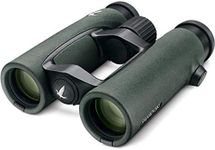
Swarovski
Swarovski 8.5x42 EL Binocular with FieldPro Package, Green
View Product
#3
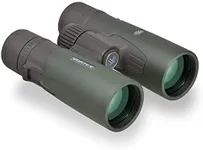
Vortex
Vortex Optics Razor HD Roof Prism Binoculars 8x42
View Product
#4

Nikon
NIKON Monarch M5 10x42
View Product
#5
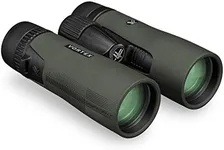
Vortex
Vortex Optics Diamondback HD Binoculars 10x42
View Product
#6
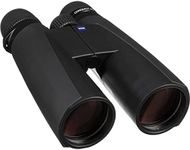
Zeiss
Zeiss 10x56 Conquest HD Binocular with LotuTec Protective Coating (Black)
View Product
#7

Swarovski
Swarovski Optik CL Curio 7x21 Compact Binoculars (Anthracite)
View Product
#8
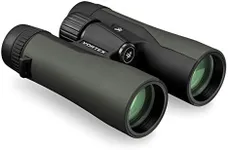
Vortex
Vortex Optics Crossfire HD 8x42 Binoculars
View Product
#9
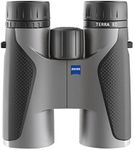
ZEISS
ZEISS Terra ED Binoculars 10x42 Waterproof, and Fast Focusing with Coated Glass for Optimal Clarity in All Weather Conditions for Bird Watching, Hunting, Sightseeing, Grey
View Product
#10
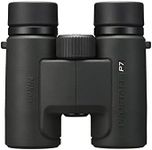
Nikon
NIKON PROSTAFF P7 8X30
View Product
Buying Guide for the Best Birding Binoculars
Choosing the right binoculars for birding can make your outdoor experiences much more enjoyable and rewarding. The right pair will help you spot birds clearly, comfortably, and for longer periods without strain. When shopping for birding binoculars, it's important to understand the key features that affect how well you can see, how easy the binoculars are to use, and how comfortable they are to carry. By focusing on your own needs—like where you’ll be birding, how much weight you’re willing to carry, and how steady your hands are—you can find a pair that fits you perfectly.Magnification and Objective Lens DiameterThis is usually shown as two numbers, like 8x42. The first number (magnification) tells you how many times closer the object will appear, while the second number (objective lens diameter, in millimeters) affects how much light the binoculars gather. For birding, 8x or 10x magnification is common. 8x gives a wider view and is easier to hold steady, while 10x brings birds closer but can be shakier and has a narrower view. The objective lens size (like 42mm) affects brightness; larger lenses are brighter but heavier. If you birdwatch in forests or low light, a larger lens helps, but for long hikes, a smaller, lighter pair may be better.
Field of ViewField of view is how wide an area you can see through the binoculars, usually measured in feet at 1,000 yards or in degrees. A wider field of view makes it easier to spot and follow moving birds, especially in dense areas. Lower magnification usually means a wider field of view. If you often watch fast-moving or small birds, or bird in wooded areas, a wide field of view is very helpful. If you mostly watch larger birds or scan open areas, a narrower field may be fine.
Close Focus DistanceClose focus distance is the shortest distance at which the binoculars can focus clearly, usually measured in feet or meters. This is important if you like to watch birds or insects up close, such as hummingbirds at feeders or butterflies. If you want to observe wildlife nearby, look for binoculars with a close focus of under 8 feet. If you only watch distant birds, this is less important.
Weight and SizeThe weight and size of binoculars affect how comfortable they are to carry and use for long periods. Heavier binoculars can be tiring to hold, especially during long birding sessions or hikes. Compact binoculars are lighter and easier to carry, but may not be as bright or comfortable for extended use. If you travel a lot or hike long distances, lighter and smaller binoculars are a good choice. If you mostly bird from one spot, a larger pair may be fine.
Eye ReliefEye relief is the distance you can hold the binoculars from your eyes and still see the full image, measured in millimeters. This is especially important if you wear glasses. Longer eye relief (15mm or more) is better for glasses wearers, as it allows you to see the whole field of view without removing your glasses. If you don’t wear glasses, this is less critical, but still affects comfort.
Waterproofing and DurabilityBirding often happens outdoors in all kinds of weather, so waterproof and fog-proof binoculars are important for protecting your investment and ensuring clear views. Look for models labeled as waterproof and nitrogen- or argon-purged to prevent internal fogging. If you bird in wet or humid areas, or want to use your binoculars in all seasons, these features are essential. If you only bird indoors or in dry climates, they are less critical.
Focus MechanismThe focus mechanism is how you adjust the sharpness of the image. Most binoculars use a central focus wheel, which should turn smoothly and easily. Some also have a diopter adjustment to fine-tune for differences between your eyes. If you want to quickly focus on moving birds, look for a focus wheel that is easy to reach and turns smoothly. If you have trouble with fine motor skills, try to find a model with a larger, easier-to-turn wheel.
